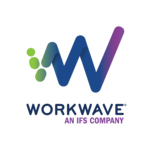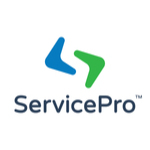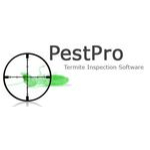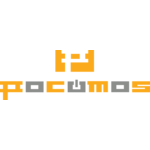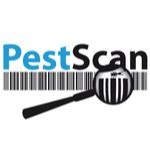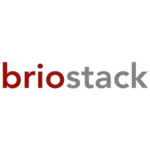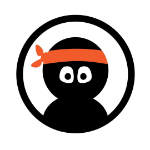List of Best Pest Control Software
Showing 10 of 19 productsPestPac is a solution for managing your pest control business. Streamline your operations, increase efficiency and boost customer satisfaction with our intuitive and powerful software. Say goodbye to manual processes and hello to seamless automation...Read PestPac Reviews
ServSuite is a dynamic software solution specifically designed to empower businesses in the service industry. With its user-friendly interface features, ServSuite streamlines operations, enhances productivity, and maximizes profits for companies of a...Read ServSuite Reviews
PestPro Termite is a solution for all your termite management needs. Equipped with state-of-the-art technology, PestPro Termite offers unmatched efficiency and accuracy in detecting and eliminating termite infestations. Say goodbye to the costly dama...Read PestPro Termite Reviews
Pocomos is a solution for managing and optimizing your business operations. With its user-friendly interface features, Pocomos streamlines all aspects of your business, from inventory management to customer relations. Say goodbye to tedious, manual p...Read Pocomos Reviews
Fieldwork is a software that revolutionizes the world of field research. With its user-friendly interface and powerful features, Fieldwork simplifies data collection, analysis, and reporting to provide accurate is a results. Say goodbye to traditiona...Read Fieldwork Reviews
Cerber, the leading software for total protection against cyber threats. With advanced security features and top-of-the-line technology, Cerber ensures the safety of your data and devices. Trust in Cerber to safeguard your online presence and shield...Read Cerber Reviews
PestScan is a tool that revolutionizes the way pest control companies manage and track infestations. With its user-friendly interface features, PestScan allows for efficient and accurate pest identification and treatment plans, ensuring a pest-free e...Read PestScan Reviews
Briostack is a software designed to streamline and simplify your business operations. With its advanced features and user-friendly interface, Briostack is a solution for managing tasks, employees, and customers. Experience the power of this dynamic s...Read Briostack Reviews
Formitize is a digital business solution that streamlines your form creation and data management processes. Its a game-changing tool that revolutionizes how businesses handle paperwork and data collection, making operations more efficient and product...Read Formitize Reviews
Kickserv is a user-friendly service management platform designed to streamline and organize all aspects of your business, from scheduling and dispatching to invoicing and customer communication. With its intuitive interface and powerful features, Kic...Read Kickserv Reviews
- What Is Pest Control Software?
- Top Reasons Why Businesses Need Pest Control Software?
- What Are the Top Key Features of Pest Control Software?
- What Are the Top Benefits of Pest Control Software?
- What Are the Steps to Choose the Right Pest Control Software?
- What Are the Types of Pest Control Software for Different Industries?
- What Are the Technology Trends for Best Pest Control Software?
- What Are the Deployment Options for Pest Control Software?
What Is Pest Control Software?
Pest control software refers to a computerized system utilized for the purpose of overseeing and regulating procedures related to the eradication of pests. The software is specifically developed to assist pest treatment organizations in managing various activities, including but not limited to scheduling, monitoring infestations, and assessing potential threats.
Additionally, pest control business software aids in the assessment of the efficacy of control measures and therapeutic interventions. Pest control management software has the capability to automate crucial processes and efficiently retrieve comprehensive client history, as well as field and office operations data.
Implementing this strategy can result in time savings and enhanced efficiency, ultimately leading to an improved level of service provided to clients. Furthermore, the utilization of the best pest control software for small business can offer users access to up-to-date information, hence facilitating the prompt identification of potential risks.
In brief, pest control business software refers to an automated software application utilized by professionals in the extermination and pest control industry to enhance the efficiency of their service provision and operational processes.
The automation of significant processes, the provision of real-time data, and the enhancement of the overall quality of the client experience are key benefits offered by this system.
Top Reasons Why Businesses Need Pest Control Software?
1. The precise and effective monitoring of historical and ongoing pest control endeavors.
2. Automated scheduling is implemented to guarantee prompt treatment and subsequent follow-up appointments.
3. The best pest control software for small business possesses the capability to generate personalized moisture maps, treatment records, and various other papers pertaining to pest management.
4. The determination of pest infestation levels and patterns to facilitate more informed decision-making in the realm of pest control.
4. The implementation of efficient communication and collaboration strategies among staff, clients, and the pest control supplier has been prioritized.
5. The task at hand involves the creation of precise invoices and reports in order to fulfill regulatory obligations.
6. Automated notifications are dispatched to both customers and team members at predetermined intervals.
7. One can utilize real-time data access to promptly detect pest-related issues and implement proactive measures.
8. The capacity to develop route optimization strategies to enhance operational efficiency in the field.
9. The primary objective is to compile and organize disease and injury data in order to ensure quality assurance and facilitate reporting procedures.
10. The incorporation of existing customer relationship management (CRM) systems and other external data sources into the pest control management software.
11. Enable the exchange of data with external government entities to ensure adherence to regulatory requirements.
12. The incorporation of safety measures and obtaining safety certifications that are mandated by local government for pest inspections.
13. The best pest control software for small business has the capability to generate tailored reporting dashboards that cater to the specific needs of executives, managers, and compliance officers.
14. Automated notifications are triggered upon the attainment of specific thresholds, such as a substantial increase in pest infestations or the occurrence of a novel pest sighting.
What Are the Top Key Features of Pest Control Software?
The top key features of pest control software include:
1. Automated Scheduling: This system automates the process of pest control service visits, effectively managing the scheduling of inspections and treatments based on customer requirements and financial considerations.
2. Integrated Customer Management: The pest control management software offers comprehensive customer data management, order tracking, invoice generation, payment processing, and post-sales follow-up services.
3. Advanced Reporting: The pest control business software produces comprehensive reports encompassing several aspects like as operations, financials, marketing, and consumer data.
4. Job Management & Tracking: This solution facilitates the efficient management of job tasks by enabling seamless tracking and monitoring of services rendered in the field.
5. Inventory Control & Logistics: The system effectively monitors inventory and oversees logistical operations by utilizing up-to-date data, thereby ensuring the appropriate storage of items and supplies.
6. Performance & Compliance Tracking: This study collects data pertaining to liquid and aerial applications, scheduling practices, and compliance records.
7. Mobile & Online Access: The best pest control software for small business offers mobile connectivity for accessing client data, placing orders, and managing schedules, with web accessibility for management and reporting purposes.
8. Billing & Invoicing: Efficiently manages billing and invoicing operations by leveraging comprehensive client information and implementing automated payment processing mechanisms.
What Are the Top Benefits of Pest Control Software?
1. Improved pest identification: Efficiently manages billing and invoicing operations by leveraging comprehensive client information and implementing automated payment processing mechanisms.
2. Efficiency in service delivery: Pest control software facilitates the automation of pest control procedures, resulting in a more systematic approach and thus enhancing the efficiency of service delivery.
3. Accurate treatment: The utilization of the best pest control software for small business allows for the correct formulation of an optimal treatment plan based on the identification of the specific pest species.
4. Automated record keeping: Pest control business software facilitates the automation of recording and maintenance processes associated with pest control treatments, hence enabling expedited access to records as needed.
5. Documentation of task performance: Pest control management software facilitates the documentation of task performance, a critical aspect in recording and assuring accountability for the completion of tasks.
6. Cost effectiveness: The adoption of pest control software facilitates enhanced resource allocation, resulting in cost reductions that would otherwise be associated with human labor or paper-based documentation.
What Are the Steps to Choose the Right Pest Control Software?
1. Assess the Current Situation: Prior to choosing web based pest control software, it is imperative to evaluate one's existing pest control maintenance requirements and ascertain whether any modifications will impact the decision-making process.
When making decisions on pest control, it is important to take into account various factors such as the specific type of pest control required, the extent of the infestation, the available budget, and the desired timeline for completion.
2. Research Existing Solutions: Perform an internet inquiry to explore many alternatives, thoroughly examine feedback from customers, and conduct a comprehensive analysis of the distinctive characteristics exhibited by the diverse software packages. It is advisable to thoroughly evaluate the company's customer support services and promises.
3. Consider Special Features: Various software packages provide distinct characteristics, including interoperability with cloud computing, virtual fleet tracking capabilities, and advanced analytics and reporting functionalities.
It is imperative to assess the capabilities of each package and select the one that provides the characteristics that align most effectively with one's requirements.
4. Evaluate the Cost: This analysis aims to evaluate the financial implications and advantages associated with various software packages. It is imperative to consider the expenses associated with installation, training, and continuous support.
5. Test the Software: After the process of narrowing down the available options to a select few software packages, it becomes crucial to conduct testing in order to evaluate their performance and compatibility. Request the seller to arrange a demonstration or a trial period in order to determine the most suitable option.
6. Make Your Decision: Upon the completion of the aforementioned stages, it is imperative to conduct a comprehensive analysis of the accumulated information in order to arrive at a well-informed decision regarding the best pest control software for small business.
What Are the Types of Pest Control Software for Different Industries?
The selection of pest control software for various industries is contingent upon the severity and kind of pest infestation encountered by the respective industry.
In general, the categorization of pest control software encompasses:
1. Cloud-based Software: Cloud-based software solutions provide a platform that supports multiple users and offers enhanced scalability and management for managing larger areas and sites.
The aforementioned web based pest control software possesses the capability to be accessed remotely via an internet connection, rendering it highly suitable for enterprises that operate across multiple geographical areas.
2. Inventory Management Software: Inventory management software is a valuable tool that facilitates the monitoring and administration of pest control supplies, orders, and treatment programs.
This software application facilitates the management of a company's inventory of insecticides, traps, and other essential supplies required for the efficient implementation of pest control measures.
3. Reporting and Analytics Software: The best pest control software for small business aids pest treatment organizations in generating insights based on data analysis, enabling them to comprehend the occurrence of pest infestations in terms of their location, timing, and manner.
The inclusion of analytical details can facilitate the development of proactive strategies and future-oriented plans.
4. Scheduling Software: The scheduling program is designed to monitor the availability of a technician on an individual basis, taking into account various factors such as their contractual working hours, sick leave, vacation days, and other components that affect their availability.
The pest control management software facilitates the efficient and expeditious scheduling and arrangement of appointments for technicians.
5. GIS Technology: The utilization of Geographic Information System (GIS) technology facilitates pest control business software, the seamless generation of maps incorporating various elements such as road networks, architectural structures, and environmental characteristics.
Geographic Information System (GIS) technology facilitates the utilization of site analysis and pest dispersion maps by pest control firms for the purpose of monitoring and managing pest infestations.
What Are the Technology Trends for Best Pest Control Software?
There exist numerous technological advances pertaining to optimal pest control software. Illustrative instances of these patterns encompass:
1. Automation: The utilization of automation in pest control activities such as monitoring and scheduling is experiencing a growing trend. The automation of these procedures has the potential to enhance the efficiency and accuracy of pest control operations.
2. Cloud-Based Solutions: The adoption of cloud-based pest control software solutions is increasing due to their cost-effectiveness and enhanced data storage capabilities compared to conventional systems.
3. Data Analytic Features: The integration of data analytic functionalities into pest control software can enhance organizational decision-making processes and provide deeper insights into pest management operations.
4. Merging of Services: The integration of web based pest control software with supplementary services like as GPS tracking or environmental monitoring can offer significant benefits to experts in the pest control industry. This integration facilitates efficient monitoring and management of all operational aspects, hence enhancing overall operational effectiveness.
5. Mobile Software: The popularity of mobile applications for pest control is on the rise due to its ability to provide technicians with a handy and efficient means of remotely accessing and managing pest management information.
What Are the Deployment Options for Pest Control Software?
The deployment choices for pest control software exhibit variability contingent upon the specific sort of software being considered. In general, the available alternatives encompass either cloud-based solutions or on-premises solutions.
1. Cloud-based deployment refers to a method of software delivery known as software as a service (SaaS), wherein the software provider offers the service and hosts it on the Internet.
web based pest control software provide users the convenience of accessing software by just connecting to the internet and paying a recurring monthly subscription price.
2. The alternative choice entails an on-premises deployment, wherein the user acquires the software through downloading and afterwards operates it on their respective servers or computer systems.
This alternative necessitates the user to possess a higher level of technical expertise and assume responsibility for the administration and upkeep of the software autonomously.
